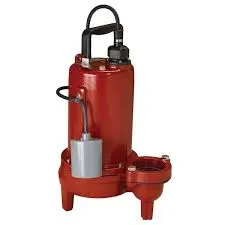Khmer
- Afrikaans
- Albanian
- Amharic
- Arabic
- Armenian
- Azerbaijani
- Basque
- Belarusian
- Bengali
- Bosnian
- Bulgarian
- Catalan
- Cebuano
- Corsican
- Croatian
- Czech
- Danish
- Dutch
- English
- Esperanto
- Estonian
- Finnish
- French
- Frisian
- Galician
- Georgian
- German
- Greek
- Gujarati
- Haitian Creole
- hausa
- hawaiian
- Hebrew
- Hindi
- Miao
- Hungarian
- Icelandic
- igbo
- Indonesian
- irish
- Italian
- Japanese
- Javanese
- Kannada
- kazakh
- Khmer
- Rwandese
- Korean
- Kurdish
- Kyrgyz
- Lao
- Latin
- Latvian
- Lithuanian
- Luxembourgish
- Macedonian
- Malgashi
- Malay
- Malayalam
- Maltese
- Maori
- Marathi
- Mongolian
- Myanmar
- Nepali
- Norwegian
- Norwegian
- Occitan
- Pashto
- Persian
- Polish
- Portuguese
- Punjabi
- Romanian
- Russian
- Samoan
- Scottish Gaelic
- Serbian
- Sesotho
- Shona
- Sindhi
- Sinhala
- Slovak
- Slovenian
- Somali
- Spanish
- Sundanese
- Swahili
- Swedish
- Tagalog
- Tajik
- Tamil
- Tatar
- Telugu
- Thai
- Turkish
- Turkmen
- Ukrainian
- Urdu
- Uighur
- Uzbek
- Vietnamese
- Welsh
- Bantu
- Yiddish
- Yoruba
- Zulu
Telephone: +86 13120555503
Email: frank@cypump.com
ធ្នូ . 11, 2024 09:07 Back to list
Sewage Collection and Pumping System Design and Maintenance Guide
Sewage Pit and Pump Essential Components of Waste Management
In modern sanitation systems, the effective management of wastewater is crucial for maintaining public health and environmental safety. Among the key components in wastewater treatment are sewage pits and pumps, which play a vital role in the collection, transportation, and processing of sewage. Understanding how these systems function can help communities maintain cleanliness and prevent pollution.
What is a Sewage Pit?
A sewage pit, often referred to as a septic pit or tank, is a subterranean chamber that collects and treats wastewater from household plumbing. Typically constructed from concrete, fiberglass, or plastic, these pits are designed to hold and partially decompose sewage through anaerobic (without oxygen) processes. When wastewater flows into the pit, heavier solids settle to the bottom, forming sludge. Lighter materials, such as grease, rise to the surface, forming a scum layer.
The size and design of a sewage pit depend on the number of users it serves and local health regulations. A well-designed sewage pit can effectively treat wastewater, allowing liquid effluent to seep into the surrounding soil, where natural processes further promote decomposition and purification.
The Role of Pumps in Sewage Systems
While sewage pits are effective in capturing and treating wastewater, they often need assistance in removing the effluent. This is where sewage pumps come into play. Sewage pumps are mechanical devices designed to transfer wastewater from lower points, such as pits or basements, to a higher elevation for further treatment or disposal.
There are different types of sewage pumps, including submersible pumps, which are installed directly in the sewage pit, and centrifugal pumps, which are typically located above ground. Submersible pumps are generally the preferred choice because they operate quietly and efficiently underwater. They can handle solids and debris, making them suitable for sewage applications.
sewage pit and pump

Importance of Maintenance
Both sewage pits and pumps require regular maintenance to function effectively. Sewage pits need to be inspected and pumped out periodically to remove the accumulated sludge and scum. How often this is needed depends on factors such as the size of the pit, the volume of wastewater generated, and local regulations. Neglecting maintenance can lead to system failures, resulting in unpleasant odors, backups, and potential health hazards.
Pump maintenance is equally important. Regular checks to ensure that the pumps are working correctly, free from obstructions, and that float switches and other components function properly can prevent costly repairs and ensure the continuous flow of wastewater.
Environmental Considerations
Effective sewage management not only benefits individual homes but also plays a crucial role in protecting the environment. When sewage pits and pumps are functioning correctly, they reduce the risk of contamination of surface and groundwater. Unmanaged waste can lead to serious environmental issues, including water pollution and the spread of waterborne diseases.
Communities should prioritize investing in proper sewage systems, educating residents on usage and maintenance, and adhering to local regulations regarding wastewater management. With the majority of health-related issues stemming from poor sanitation, proper management of sewage pits and pumps is integral to public health.
Conclusion
In conclusion, sewage pits and pumps are essential components of effective waste management systems. By understanding their function, implementing regular maintenance, and adhering to environmental regulations, communities can promote a safe and healthy living environment. As technology advances, the systems for managing sewage will continue to evolve, becoming even more efficient and environmentally friendly, but the fundamental role of sewage pits and pumps will remain critical in our collective efforts to manage wastewater responsibly.
-
Heavy-Duty Mining Sludge Pumps - Wear-Resistant Slurry Handling
NewsAug.02,2025
-
Horizontal Split Case Pump with GPT-4 Turbo | High Efficiency
NewsAug.01,2025
-
ISG Series Pipeline Pump - Chi Yuan Pumps | High Efficiency, Durable Design
NewsAug.01,2025
-
Advanced Flue Gas Desulfurization Pump with GPT-4 Turbo | Durable & Efficient
NewsJul.31,2025
-
ISG Series Vertical Pipeline Pump - Chi Yuan Pumps | Advanced Hydraulic Design&Durable Construction
NewsJul.31,2025
-
ISG Series Vertical Pipeline Pump - Chi Yuan Pumps | Energy Efficient & Low Noise
NewsJul.31,2025










